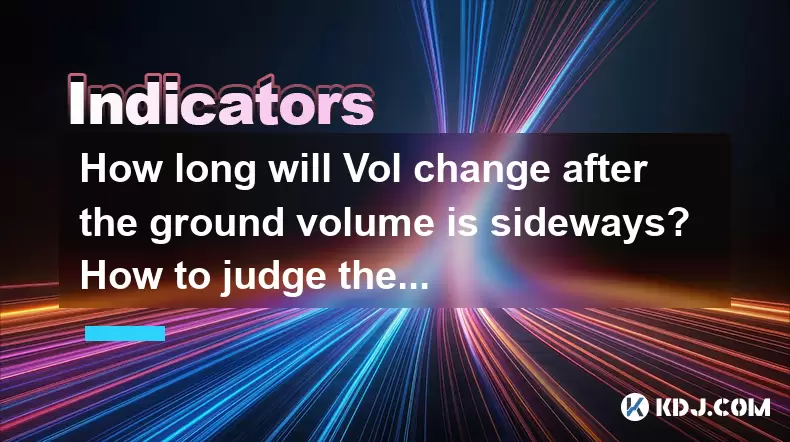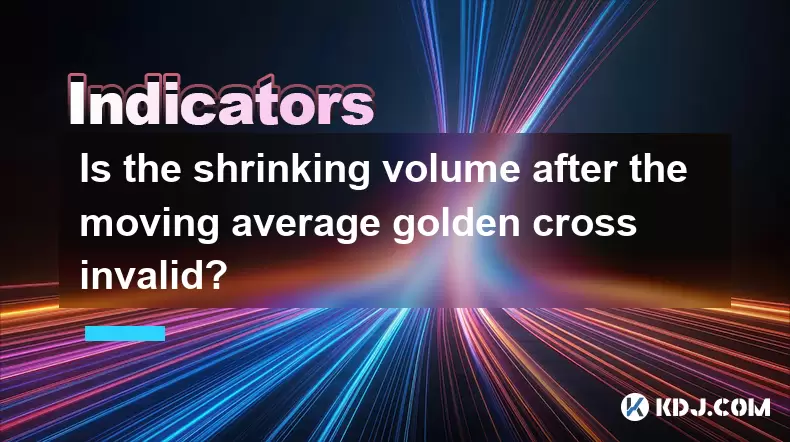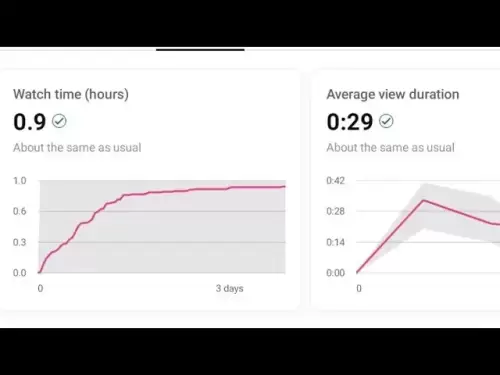-
 Bitcoin
Bitcoin $103,456.1111
0.49% -
 Ethereum
Ethereum $2,414.9631
0.02% -
 Tether USDt
Tether USDt $1.0006
0.05% -
 XRP
XRP $2.1083
0.24% -
 BNB
BNB $634.8760
-0.76% -
 Solana
Solana $139.8437
1.94% -
 USDC
USDC $0.9998
-0.01% -
 TRON
TRON $0.2737
0.97% -
 Dogecoin
Dogecoin $0.1602
0.20% -
 Cardano
Cardano $0.5737
1.08% -
 Hyperliquid
Hyperliquid $32.9779
-2.54% -
 Bitcoin Cash
Bitcoin Cash $474.8886
-1.80% -
 Sui
Sui $2.6272
-1.99% -
 Chainlink
Chainlink $12.4878
0.14% -
 UNUS SED LEO
UNUS SED LEO $8.9234
0.35% -
 Stellar
Stellar $0.2411
-0.18% -
 Avalanche
Avalanche $17.0274
-0.70% -
 Toncoin
Toncoin $2.8936
-1.11% -
 Shiba Inu
Shiba Inu $0.0...01112
-0.58% -
 Litecoin
Litecoin $82.6982
1.33% -
 Hedera
Hedera $0.1423
-0.05% -
 Monero
Monero $314.8455
3.26% -
 Ethena USDe
Ethena USDe $1.0006
0.01% -
 Polkadot
Polkadot $3.4043
1.14% -
 Dai
Dai $0.9999
0.01% -
 Bitget Token
Bitget Token $4.2848
-0.13% -
 Uniswap
Uniswap $6.8748
-5.45% -
 Pepe
Pepe $0.0...09661
0.52% -
 Pi
Pi $0.5359
1.19% -
 Aave
Aave $242.9168
-1.03%
How long will Vol change after the ground volume is sideways? How to judge the direction?
Volume changes after sideways movement in crypto trading can last from hours to months, influenced by market news, sentiment, and technical indicators.
May 27, 2025 at 09:07 pm

Understanding Volume Changes in Cryptocurrency Trading
In the dynamic world of cryptocurrency trading, volume is a critical indicator that traders use to gauge market activity and potential price movements. The term "ground volume" refers to the baseline trading volume of a cryptocurrency over a period when the price action is relatively stable or "sideways." When the ground volume changes, it can signal shifts in market sentiment and potential price breakouts. This article will explore how long volume changes typically last after a period of sideways movement and how to judge the direction of these changes.
The Duration of Volume Changes Post-Sideways Movement
After a period of sideways movement, the duration of volume changes can vary based on several factors including market conditions, news events, and the overall sentiment of traders. Typically, volume changes that follow a period of sideways movement can last anywhere from a few hours to several days. The key is to observe how quickly the volume stabilizes after the initial spike or drop.
- Short-term Changes: In many cases, volume changes after a sideways period are short-lived, lasting only a few hours. This is often seen in response to news or events that cause a temporary surge in trading activity.
- Medium-term Changes: Volume changes that persist for a few days are often indicative of a more significant shift in market sentiment. These changes can be a precursor to a more sustained price movement.
- Long-term Changes: In some instances, volume changes can signal the beginning of a new trend, lasting weeks or even months. This is less common but can be a powerful indicator for long-term investors.
Factors Influencing the Duration of Volume Changes
Several factors can influence how long volume changes last after a period of sideways movement. Understanding these factors can help traders better predict the duration and impact of volume shifts.
- Market News and Events: News announcements, regulatory changes, or significant developments within the cryptocurrency ecosystem can cause sudden spikes in volume. The duration of these changes often depends on the perceived importance and long-term impact of the news.
- Market Sentiment: The overall sentiment of traders can significantly affect volume. Positive sentiment can lead to sustained increases in volume, while negative sentiment can result in prolonged decreases.
- Technical Indicators: Technical analysis tools, such as moving averages and relative strength index (RSI), can provide insights into the potential duration of volume changes. For instance, a breakout above a key resistance level accompanied by high volume may indicate a longer-lasting change.
Judging the Direction of Volume Changes
Judging the direction of volume changes after a period of sideways movement is crucial for making informed trading decisions. Here are some methods to help traders determine the direction of these changes.
- Volume and Price Correlation: One of the most straightforward methods is to observe the correlation between volume and price. An increase in volume accompanied by a price increase suggests bullish sentiment, while an increase in volume with a price decrease indicates bearish sentiment.
- Volume Profiles: Volume profiles can help traders understand the distribution of trading activity at different price levels. A shift in the volume profile can indicate a change in market direction.
- Technical Indicators: Various technical indicators can be used to confirm the direction of volume changes. For example, the On-Balance Volume (OBV) indicator can help traders identify whether volume is confirming or contradicting price movements.
Practical Steps to Analyze Volume Changes
To effectively analyze volume changes after a period of sideways movement, traders can follow these practical steps:
- Monitor Volume Charts: Use a reliable trading platform to monitor volume charts in real-time. Look for significant spikes or drops in volume that coincide with price movements.
- Set Alerts: Set up alerts for volume thresholds to be notified of significant changes. This can help traders react quickly to potential market shifts.
- Use Multiple Timeframes: Analyze volume changes across multiple timeframes, such as hourly, daily, and weekly charts. This can provide a more comprehensive view of the market dynamics.
- Combine with Other Indicators: Use volume analysis in conjunction with other technical indicators, such as moving averages, RSI, and MACD, to confirm the direction and strength of volume changes.
Interpreting Volume Changes in Real-Time
Interpreting volume changes in real-time requires a keen understanding of market dynamics and the ability to react swiftly to new information. Here are some tips for effectively interpreting volume changes as they occur.
- Stay Informed: Keep up-to-date with the latest news and developments in the cryptocurrency market. News can have a significant impact on volume and price movements.
- Use Trading Software: Utilize advanced trading software that provides real-time data and analysis tools. This can help traders quickly identify and interpret volume changes.
- Practice Patience: Avoid making hasty decisions based on short-term volume spikes. Instead, wait for confirmation from other indicators and market signals.
Frequently Asked Questions
Q: Can volume changes be manipulated by large traders or exchanges?
A: Yes, volume can be manipulated by large traders or exchanges through practices like wash trading or spoofing. However, reputable exchanges implement measures to detect and prevent such activities. Traders should use multiple sources and indicators to validate volume data.
Q: How does liquidity affect volume changes?
A: Liquidity plays a significant role in volume changes. Higher liquidity typically results in more stable and predictable volume patterns, while low liquidity can lead to more volatile and erratic volume changes. Traders should consider liquidity when analyzing volume.
Q: Are there specific cryptocurrencies where volume changes are more significant?
A: Yes, volume changes can be more significant in cryptocurrencies with high market caps and active trading communities, such as Bitcoin and Ethereum. These cryptocurrencies often experience more substantial volume shifts due to their widespread adoption and liquidity.
Q: Can volume changes predict price movements accurately?
A: Volume changes can provide valuable insights into potential price movements, but they should not be used in isolation. Combining volume analysis with other technical and fundamental indicators can improve the accuracy of predictions.
Disclaimer:info@kdj.com
The information provided is not trading advice. kdj.com does not assume any responsibility for any investments made based on the information provided in this article. Cryptocurrencies are highly volatile and it is highly recommended that you invest with caution after thorough research!
If you believe that the content used on this website infringes your copyright, please contact us immediately (info@kdj.com) and we will delete it promptly.
- Ruvi AI: The Audited Token Poised to Outshine Shiba Inu
- 2025-06-22 10:25:12
- Dypians, DeFi, and Sei Network: A Deep Dive into the Latest Trends
- 2025-06-22 10:25:12
- Hacken Security Breach Highlights Risks Across Ethereum and BSC
- 2025-06-22 08:25:12
- SHIB Price, Forecasts, Timelines: Will Shiba Inu Ever Reach the 'One-Cent Dream'?
- 2025-06-22 08:25:12
- Avalanche vs. Ruvi AI: Why Smart Money's on This Audited Token
- 2025-06-22 08:45:12
- Bitcoin Demand on Pause: What's Next for the Crypto King?
- 2025-06-22 08:45:12
Related knowledge

Does the second surge in the RSI overbought zone induce more?
Jun 22,2025 at 08:35am
Understanding the RSI Overbought ZoneThe Relative Strength Index (RSI) is a momentum oscillator commonly used in technical analysis to measure the speed and change of price movements. It ranges from 0 to 100, with values above 70 typically considered overbought and values below 30 considered oversold. When the RSI enters the overbought zone for the firs...

Does the sudden contraction of ATR indicate the end of the trend?
Jun 20,2025 at 11:14pm
Understanding ATR and Its Role in Technical AnalysisThe Average True Range (ATR) is a technical indicator used to measure market volatility. Developed by J. Welles Wilder, ATR calculates the average range of price movement over a specified period, typically 14 periods. It does not indicate direction—only volatility. Traders use ATR to gauge how much an ...

Is it invalid if the DMI crosses but the ADX does not expand?
Jun 21,2025 at 09:35am
Understanding the DMI and ADX RelationshipIn technical analysis, the Directional Movement Index (DMI) consists of two lines: +DI (Positive Directional Indicator) and -DI (Negative Directional Indicator). These indicators are used to determine the direction of a trend. When +DI crosses above -DI, it is often interpreted as a bullish signal, while the opp...

How to filter false signals when the SAR indicator frequently flips?
Jun 21,2025 at 08:43pm
Understanding the SAR Indicator and Its BehaviorThe SAR (Stop and Reverse) indicator is a popular technical analysis tool used in cryptocurrency trading to identify potential reversals in price movement. It appears as a series of dots placed either above or below the price chart, signaling bullish or bearish trends. When the dots are below the price, it...

Is the trend continuation when the Williams indicator is oversold but there is no rebound?
Jun 20,2025 at 11:42pm
Understanding the Williams %R IndicatorThe Williams %R indicator, also known as the Williams Percent Range, is a momentum oscillator used in technical analysis to identify overbought and oversold levels in price movements. It typically ranges from 0 to -100, where values above -20 are considered overbought and values below -80 are considered oversold. T...

Is the shrinking volume after the moving average golden cross invalid?
Jun 22,2025 at 10:42am
Understanding the Moving Average Golden Cross in CryptocurrencyIn the world of cryptocurrency trading, technical indicators play a crucial role in decision-making. One such indicator is the moving average golden cross, which occurs when a short-term moving average crosses above a long-term moving average, typically signaling a bullish trend. This event ...

Does the second surge in the RSI overbought zone induce more?
Jun 22,2025 at 08:35am
Understanding the RSI Overbought ZoneThe Relative Strength Index (RSI) is a momentum oscillator commonly used in technical analysis to measure the speed and change of price movements. It ranges from 0 to 100, with values above 70 typically considered overbought and values below 30 considered oversold. When the RSI enters the overbought zone for the firs...

Does the sudden contraction of ATR indicate the end of the trend?
Jun 20,2025 at 11:14pm
Understanding ATR and Its Role in Technical AnalysisThe Average True Range (ATR) is a technical indicator used to measure market volatility. Developed by J. Welles Wilder, ATR calculates the average range of price movement over a specified period, typically 14 periods. It does not indicate direction—only volatility. Traders use ATR to gauge how much an ...

Is it invalid if the DMI crosses but the ADX does not expand?
Jun 21,2025 at 09:35am
Understanding the DMI and ADX RelationshipIn technical analysis, the Directional Movement Index (DMI) consists of two lines: +DI (Positive Directional Indicator) and -DI (Negative Directional Indicator). These indicators are used to determine the direction of a trend. When +DI crosses above -DI, it is often interpreted as a bullish signal, while the opp...

How to filter false signals when the SAR indicator frequently flips?
Jun 21,2025 at 08:43pm
Understanding the SAR Indicator and Its BehaviorThe SAR (Stop and Reverse) indicator is a popular technical analysis tool used in cryptocurrency trading to identify potential reversals in price movement. It appears as a series of dots placed either above or below the price chart, signaling bullish or bearish trends. When the dots are below the price, it...

Is the trend continuation when the Williams indicator is oversold but there is no rebound?
Jun 20,2025 at 11:42pm
Understanding the Williams %R IndicatorThe Williams %R indicator, also known as the Williams Percent Range, is a momentum oscillator used in technical analysis to identify overbought and oversold levels in price movements. It typically ranges from 0 to -100, where values above -20 are considered overbought and values below -80 are considered oversold. T...

Is the shrinking volume after the moving average golden cross invalid?
Jun 22,2025 at 10:42am
Understanding the Moving Average Golden Cross in CryptocurrencyIn the world of cryptocurrency trading, technical indicators play a crucial role in decision-making. One such indicator is the moving average golden cross, which occurs when a short-term moving average crosses above a long-term moving average, typically signaling a bullish trend. This event ...
See all articles
























































































